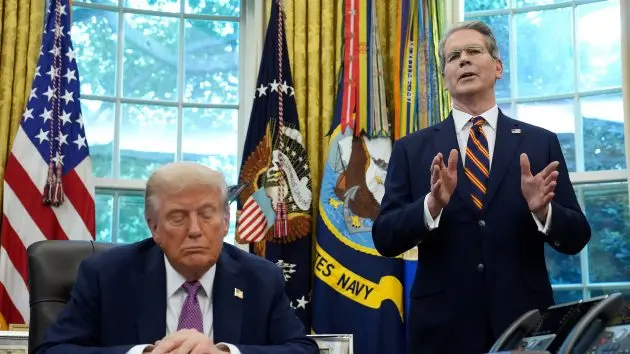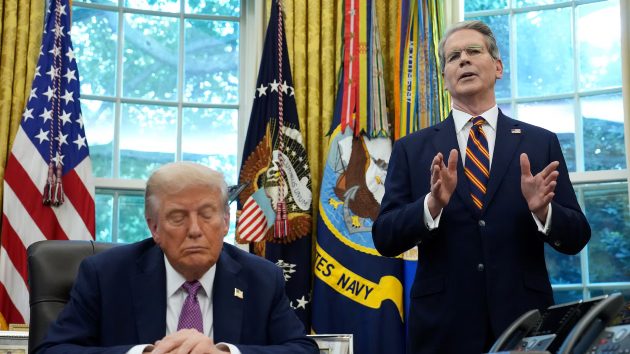
(NEW YORK) — Employers in nearly every industry have cut back on hiring, according to the latest data, leaving job seekers with fewer places to turn.
A recent jobs report extended a lackluster run of labor data that stretches back to the beginning of the summer. While the unemployment rate stands at a historically low level, millions of out-of-work Americans face stiff conditions.
Nearly two million job seekers have been out of the workforce for more than 27 weeks, which amounts to about a quarter of all unemployed people, the U.S. Bureau of Labor Statistics said on Friday.
At the same time, worker confidence in their ability to find a new job has hit a record low, according to a survey released by the New York Federal Reserve on Monday.
Analysts who spoke to ABC News attributed the tepid job market in part to economic uncertainty hanging over employers as a result of President Donald Trump’s tariff and immigration policies. The recent adoption of artificial intelligence tools has also diminished prospects for jobs in some entry-level roles, some analysts added.
“New hiring has really slowed to a crawl,” Mark Hamrick, senior economic analyst at Bankrate, told ABC News.
In a note to clients Friday, Joseph Brusuelas, global economist at RSM, described the U.S. as a “slow hire, slow fire economy,” saying that a sharp increase in tariffs has burdened some importers with higher taxes and cast doubt over the nation’s economic outlook.
“The impact of tariffs on hiring is undeniable,” Brusuelas said in the note, adding that the levies had “pushed economic uncertainty to the highest level in years.”
Restrictive immigration policies, meanwhile, have reduced the supply of available workers and threatened employers with higher labor costs, deepening a sense of uncertainty, some analysts said.
The Trump administration has pursued an immigration policy that features the detention of undocumented immigrants at work sites and the revocation of Temporary Protected Status – a form of temporary legal status – for hundreds of thousands of immigrants.
“We’re deporting lots and lots of working immigrants. That just stirs the pot even further in terms of employers feeling, ‘We don’t know what’s going on here,’” Michelle Holder, a labor economist at John Jay College of Criminal Justice, told ABC News.
For its part, the Trump administration downplayed the weaker-than-expected jobs report late last week, voicing expectations of an upward revision of the data and predicting better job performance.
A tax-cut measure enacted by Trump earlier this year will boost business investment and drive up hiring, Kevin Hassett, director of the National Economic Council, told reporters on Friday.
“President Trump knows that we’re super optimistic about the future of the jobs numbers, because we’re seeing a massive blowout in capital spending,” Hassett said.
The hiring cooldown has hit nearly every industry, including leisure and hospitality and the federal government, BLS data shows.
The manufacturing sector has suffered a net loss of 78,000 jobs this year in the midst of a tariff policy that the Trump administration has said is aimed at reviving domestic production. Construction, another key sector dependent on long-term investment, has incurred a net loss of 10,000 jobs over the past three months.
“This has to do with producers’ uncertainties about the future,” Holder said.
In response to the flagging labor market, the Fed is expected to cut interest rates when policymakers meet later this month. Investors peg the chances of a quarter-point rate cut this month at about 88% and the odds of a half-point cut at nearly 12%, according to CME FedWatch Tool, a measure of market sentiment.
In theory, a reduction of interest rates could boost hiring as borrowing expenses fall and businesses encounter more favorable conditions for new investment. However, the Fed’s incremental approach is unlikely to yield major improvement for job seekers anytime soon, Hamrick said.
“It will have a marginal impact for people,” Hamrick added. “I don’t see that producing a sea change in the environment anytime soon.”
Copyright © 2025, ABC Audio. All rights reserved.






